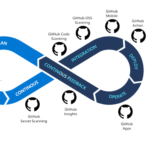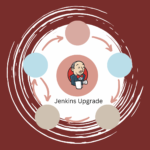Introduction
Imagine a world where every developer can spin up fully compliant environments, deploy applications, and monitor performance without waiting on centralized ops teams.[4] Welcome to platform engineering—an approach that transforms DevOps into a self‑service model, empowering “builders” to iterate faster.[5] In this post, we’ll explore how platform engineering teams design, build, and operate IDPs to streamline workflows, enforce governance, and supercharge developer productivity.
Key Concepts and Trends in 2025
Defining Platform Engineering
Platform engineering focuses on creating opinionated, self‑service tools and environments that shield developers from underlying infrastructure complexity.[2] It bridges Dev and Ops by packaging best practices, policies, and automation into an IDP framework.[6]
Self‑Service DevOps
Self‑service DevOps enables developers to provision resources, configure pipelines, and access observability data through intuitive interfaces—reducing lead time for changes.[3] By embedding governance and security guardrails, platform teams ensure compliance without slowing innovation.[7]
Maturity and Best Practices
In 2025, platform engineering is shifting from hype to reality, with mature blueprints drawn from successful implementations at companies like Spotify and Microsoft.[8] Teams adopt composability—treating services as interoperable building blocks—and prioritize Developer Experience (DevEx) metrics alongside business outcomes.
Case Study: Spotify’s Backstage
Spotify’s Backstage is an open‑source IDP that unifies service cataloging, CI/CD, and documentation in a single portal.[9] Since open‑sourcing in 2020, over 3,000 companies have adopted Backstage, reporting up to 25% fewer production incidents thanks to standardized templates and embedded observability.[8]
Step‑by‑Step Guide to Building Your First IDP
- Assess Developer Pain Points: Survey teams to identify friction in provisioning, deployment, and observability.[5]
- Define Opinionated Standards: Choose infrastructure‑as‑code (IaC) patterns, security baselines, and pipeline templates.[1]
- Select Core Components: Adopt or customize an IDP framework (e.g., Backstage) and integrate CI/CD (e.g., Argo CD, GitHub Actions).[10]
- Automate Environment Provisioning: Leverage Terraform Cloud or Crossplane for declarative resource management.[11]
- Embed Observability: Integrate logging and tracing (e.g., OpenTelemetry) directly into platform‑generated environments.[12]
- Implement Governance Guardrails: Enforce policies via Policy‑as‑Code (e.g., Open Policy Agent) and pre‑merge checks.[13]
- Iterate Based on DevEx Metrics: Track lead time, change failure rate, and developer satisfaction to guide improvements.[3]
Latest Tools, Technologies, and Frameworks
- Backstage: Open‑source IDP framework. backstage.io
- Terraform Cloud & Crossplane: Declarative infra management. crossplane.io
- Argo CD & GitHub Actions: GitOps‑driven CI/CD. github.com/actions
- OpenTelemetry: Unified observability. opentelemetry.io
- Policy‑as‑Code: Open Policy Agent. openpolicyagent.org
- AI‑Augmented Tooling: AI‑driven code suggestions and platform optimizations via multi‑agent systems.[4]
Challenges and Solutions
Upskilling Platform Teams
Challenge: Maintaining expertise across diverse stacks can create bottlenecks.
Solution: Establish Centers of Excellence and rotate engineers through platform roles to build cross‑functional skills.[7]
Balancing Standardization and Flexibility
Challenge: Rigid standards may stifle innovation.
Solution: Adopt “guardrails not gates” by using Policy‑as‑Code to enforce compliance without blocking creativity.[13]
Integrating Legacy Systems
Challenge: Legacy workloads often don’t fit modern IaC patterns.
Solution: Use adapter services and incremental onboarding strategies to gradually migrate legacy systems.
Future Outlook and Emerging Trends
By 2026 and beyond, platform engineering will intertwine with AI‑driven automation, enabling “vibe coding” where developers generate and refine infrastructure with natural language prompts.[8] Multi‑agent AI systems will autonomously optimize platform configurations based on usage analytics and cost metrics.[4]
Conclusion: Platform engineering represents a paradigm shift in software delivery, moving from centralized DevOps bottlenecks to self‑service platforms that empower developers.[1] By curating best practices, automating environments, and embedding governance, teams can achieve faster delivery, higher quality, and happier developers. As AI and composability mature, the next wave of IDPs will be smarter, more autonomous, and even more developer‑friendly—setting the stage for the future of software delivery.



